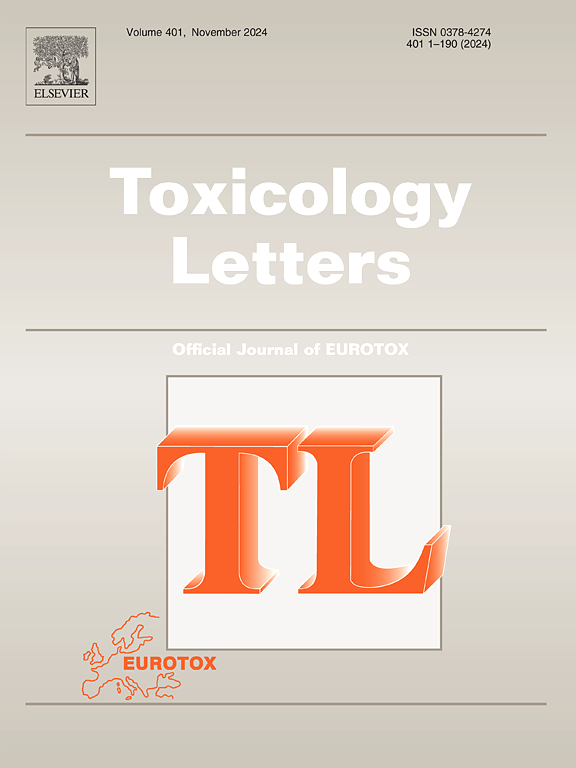molnupiravir及其活性形式β-d- n4 -羟基胞苷在秀丽隐杆线虫中的种系诱变性
IF 2.9
3区 医学
Q2 TOXICOLOGY
引用次数: 0
摘要
Molnupiravir是一种通过在SARS-CoV-2病毒的遗传密码中引入错误,从而阻止其复制的药物。以前的研究,无论是体外还是体内,都产生了关于其致突变潜力的相互矛盾的结果。虽然莫努皮拉韦及其活性形式β-d- n4 -羟基胞苷(NHC)的大多数遗传毒性和诱变性试验均为阴性,但少数体外试验显示阳性结果。因此,需要进一步的研究来评估莫诺匹拉韦的各种致突变终点。在这项研究中,通过使用WMicroTracker测量秀丽隐杆线虫的运动活性来评估急性毒性,以确定用于种系诱变研究的适当剂量范围。用不同浓度的莫努匹拉韦和NHC处理线虫,并以对照和甲基磺酸乙酯(EMS)为阳性对照。为了评估种系诱变性,将来自单克隆的P0蠕虫暴露于选定浓度的molnupiravir和NHC以及对照和阳性对照中4小时。与载体对照组相比,Molnupiravir和NHC处理在暴露1、2、3和4小时后对秀丽隐杆线虫的运动没有显著影响。相比之下,EMS显著降低了蠕虫的移动活动。随后对处理过的P0蠕虫F1后代的全基因组测序显示,与对照相比,molnupiravir和NHC都没有增加种系突变频率或改变突变类型。相比之下,EMS处理显著增加了突变频率,并观察到特定的EMS突变特征。这些结果表明,molnupiravir和NHC在秀丽隐杆线虫生殖细胞中不具有诱变性,这与先前在临床环境中证明molnupiravir具有低诱变性的研究结果一致。此外,这些发现突出了秀丽隐杆线虫作为加速毒性评估和减少实验动物使用的替代动物模型的效用。本文章由计算机程序翻译,如有差异,请以英文原文为准。
Germline mutagenicity of molnupiravir and its active form, β-d-N4-hydroxycytidine, in Caenorhabditis elegans evaluated using whole-genome sequencing
Molnupiravir is a medication used to treat COVID-19 by introducing errors into the SARS-CoV-2 virus's genetic code, thereby preventing its replication. Previous studies, both in vitro and in vivo, have yielded conflicting results regarding its mutagenic potential. While most genotoxicity and mutagenicity tests for molnupiravir and its active form, β-d-N4-hydroxycytidine (NHC), were negative, a few in vitro tests showed positive results. Consequently, further investigation is necessary to evaluate various mutagenic endpoints of molnupiravir. In this study, acute toxicity was assessed by measuring the locomotive activity of Caenorhabditis elegans using a WMicroTracker to determine an appropriate dose range for the germline mutagenicity study. The C. elegans worms were treated with different concentrations of molnupiravir and NHC, along with vehicle controls and ethyl methanesulfonate (EMS) as a positive control. To assess germline mutagenicity, P0 worms from a single clone were exposed to selected concentrations of molnupiravir and NHC, as well as vehicle and positive controls, for 4 h. Molnupiravir and NHC treatments had no significant effect on the locomotion of C. elegans worms after 1-, 2-, 3-, and 4-h exposures, compared to the vehicle control group. In contrast, EMS significantly reduced the worms' locomotive activity. Subsequent whole-genome sequencing of the F1 progeny from the treated P0 worms revealed that neither molnupiravir nor NHC increased the germline mutation frequency or altered mutation types, compared to the vehicle control. In contrast, EMS treatment significantly increased mutation frequency over the vehicle control, with a EMS-specific mutational signature observed. These results suggest that molnupiravir and NHC are not mutagenic in C. elegans germ cells, aligning with previous findings that demonstrate the low mutagenicity of molnupiravir in clinical settings. Additionally, these findings highlight the utility of C. elegans as an alternative animal model for accelerating toxicity assessments and reducing the use of experimental animals.
求助全文
通过发布文献求助,成功后即可免费获取论文全文。
去求助
来源期刊

Toxicology letters
医学-毒理学
CiteScore
7.10
自引率
2.90%
发文量
897
审稿时长
33 days
期刊介绍:
An international journal for the rapid publication of novel reports on a range of aspects of toxicology, especially mechanisms of toxicity.
 求助内容:
求助内容: 应助结果提醒方式:
应助结果提醒方式:


